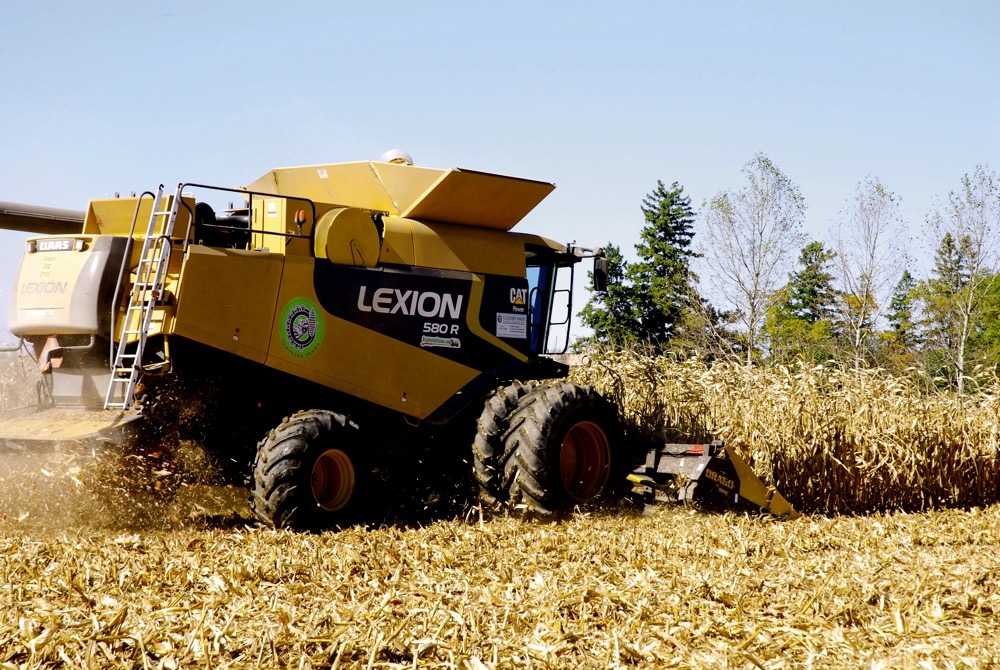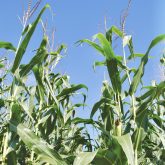Every winter, talk turns to production costs, with a focus on how to get your break-even price even lower.
But what is your break-even?
Most of us believe it’s a reasonably simple figure to calculate: just divide your yield by your expenses, including the cost of seed, fuel, fertilizer, herbicide and fungicide applications, a possible insecticide treatment, seed treatments, scouting, and any custom work done on a field.
Even if you stop there, the number can climb toward $5 a bushel.
For a better number, though, be sure to also include land costs, machinery overheads and your labour, plus insurance and related expenses.
Read Also

Ontario sisters strike farm business partnership
For several years, sisters Kori de Boer and Casie Kuypers were informally part of their family’s original dairy farm in…
And get ready to take some time to work it out. This is an exercise that is going to take some serious concentration.And it’s also work you have to do for yourself. Not only are costs different from anyone else’s, but so are your yields — which is critical.
The danger of “averages”
One of the great advances of the past 10 to 15 years in agriculture is the recognition that it can be dangerous to deal with averages. Yield expectations vary with heat units, soil types, drainage and so much more, confounding the quest for a one-size-fits-all cost of production.
Chad Anderson, an independent certified crop adviser (CCA) from Brigden, Ont., agrees that expectations and break-even pricing vary from grower to grower as well as field to field. And he emphasizes that growers need to have a strong handle on their cost structure (variable and fixed) in combination with realistic yield parameters if they’re going to perform a realistic break-even analysis.
“Producers manage their input based upon yield potential, and this can be affected by previous crops, soil type, field drainage, or in a year like 2017, where even planting date influences decisions,” says Anderson, noting the growing range of factors affecting break-even. “Yield is the most influential factor in break-even costing, as it’s the main divisor. I know of some producers who use multiple scenarios with yield: they’ll use their crop insurance average, their crop insurance guarantee and a higher yield — a kind of ‘good, bad and the ugly,’ if you will.”
Obviously the break-even figure will change across these forecasts, even if costs stay the same over all three levels.
Other growers will look at different yield goals based upon yield potential of the different fields, keeping previous crops, drainage and soil types in mind.
Then there’s the difference that a livestock or poultry producer brings to the picture. A livestock producer might only put manure on fields that are close to their livestock facilities. Those will have an inherent higher yield potential with a lower input requirement, leading to a more favourable break-even than other areas of their own farm operation, so those who do have access to manure obviously have another set of parameters to enter into the calculations.
As farming becomes more intense and more technologically advanced, the factors that might influence cost of production or break-even pricing also evolve. Dr. Dave Hooker brings a pair of considerations to costing assessments: the impact of previous crops and the ever-growing effect of precision ag. As a field crop agronomist and associate professor at University of Guelph’s Ridgetown Campus, Hooker has been involved with Dr. Bill Deen, an associate professor, also with the University of Guelph, in long-term studies on the impacts of rotation.
“We have been reminding growers of our long-term rotation data that shows wheat in the rotation increases corn and soybean yields, and enables the inclusion of red clover, which can also increase corn yield and reduce N requirements,” says Hooker. “However, the vast majority of growers do not give wheat this credit, which results in a biased break-even for wheat (a higher break-even than actual) versus corn and soybean. Without considering the systems approach on crop performance, the real break-evens for corn and soybean are higher than they first appear without wheat in the rotation, because corn and soybean yields would be lower and the cost of nitrogen for corn higher.”
Hooker acknowledges a constant friendly debate he’s had with ag economist Phil Shaw, who farms in nearby Dresden, Ont. Shaw stresses the picture of success is always based on economics and less on yield. Yet Hooker insists that growers need an accurate yield response for “product or treatment X” — and how variable the response can be, which is what he strives to provide.
At that point, growers can simply plug this number into their own farm-specific financials.
- Read more: Watch those corn prices
Hooker also sees technology causing significant changes in the ratio of costs to break-even prices. Growers who use precision ag systems like variable rate technology, field data and software to enable the generation of prescription maps will influence their bottom line.

“The cost of production (COP) and break-even varies from grower to grower, field to field and year to year,” says Hooker, echoing Anderson’s observation. “Even within a field — from a precision ag perspective, COP also depends on whether the land is rented or owned, the pest pressures present — and whether more dollars are needed to control herbicide-resistant weeds versus fields with low weed pressure or fewer herbicide-resistant weeds.”
Also a factor is whether controls are needed to suppress soybean aphid or Western bean cutworm.”
Again, echoing Anderson’s assessment, Hooker says the break-even price will depend on determining the effects of fixed costs versus variable costs. From a marketing perspective, he also believes the break-even price is important for establishing a marketing plan and callibrating it year-to-year.
Yield makes the difference
In a region where the phrase “Corn is King” is still an accurate description, Greg Stewart concedes that a grower knowing their cost of production may be essential, but not knowing it doesn’t exactly put them in a class by themselves.
Calculating break-even corn prices is probably as challenging as other aspects of crop production, and sometimes it can seem so difficult, it’s better just to skip it.
“I would assume most growers are content with doing some specific input-return calculations — as in ‘fungicide cost me $23 and I got six bushels more’ — was it worth it?” says Stewart, agronomy lead with Maizex Seeds. He also cites the 2017 OMAFRA budget to help with calculations. “Costs (from the budget) are at $558.20 per acre, so at 150 bu./ac. yield, that needs $3.72 per bushel to break even. At 200 bu./ac., that needs $2.79.”
That’s a big difference, Stewart says, especially when those figures do not include land costs.
Stewart also believes that little has been done to incorporate the value of precision ag, taking Hooker’s statement a few steps further. For all of the precision ag talks that he’s attended, he doesn’t remember anyone showing a break-even analysis on a precision ag map. He sees all kinds of yield maps and prescription maps, as if to say, “This is how we put the nitrogen down, this is how we put the potash down, this is where we up the population, this is where we drop the population.”
“When you think about it, we have some significant measuring skills, and now you’re doing some things to change your input costs,” says Stewart. “If we’re going to cut back on nitrogen or seed, it’d be really interesting to look at that map and see what it looks like in terms of break-even.”
In an ideal world, a grower should be able to see those areas of a field where they can never break even, such as a sandy knoll where the break-even cost is $7 or $8 a bushel. Stewart believes it should be possible to create a break-even map of those sections, identify where they are, and take them out of production, planting switchgrass or miscanthus and leaving it there. You wouldn’t make any money on that section or sections, but you wouldn’t lose as much, either.
“It captures this idea that in a precision ag world, our break-even costs should be quite intriguing, and what’s my break-even costs on those spots in a field, and can I do something to improve that?” says Stewart. “By improving the yield or dropping the input costs, and maybe at an extreme point, if a grower looks at a break-even map and it’s always $7.50 for that section, then those are spots in the field that I’m losing money on all of the time.”
On-farm storage
Another of the hidden costs often lost in the shuffle is on-farm storage. For Anderson, this should be treated as a fixed cost across all of a farm’s crops. A grower will have to service the debt attached to on-farm storage, regardless of what crop goes in, and your financial institution will still want the grain dryer payment whether a crop was dried or not.
“On-farm drying and storage does provide some competitive advantages in terms of break-even since, hopefully, the system you have can dry corn for less than what a commercial elevator will charge,” says Anderson. “On-farm also makes staying the course with your rotation a bit easier as you can always put the crop away and hope your loss-leader crop price improves in time versus someone who ships everything at harvest, and will be forced to deal with storage charges or brokerage fees, making the planting-time decision more restrictive in terms of pricing options.”
Ideally, a producer can make an acceptable profit in every crop they have in their desired rotation, says Anderson.
As crop prices have fallen, however, growers and their advisers are forced to look at budgets more intently. In the end, though, a grower still has to deal with some harsh realities that can’t be controlled: heavy clay soils with poor drainage probably won’t allow for too high a corn yield. But, then, farming on some sharp sand probably means wheat is out of the question as well. Crop rotations aren’t always the easiest things to maintain today.
Again, this isn’t a business for the faint of heart.
This article originally appeared in the September 2017 issue of the Corn Guide.
















